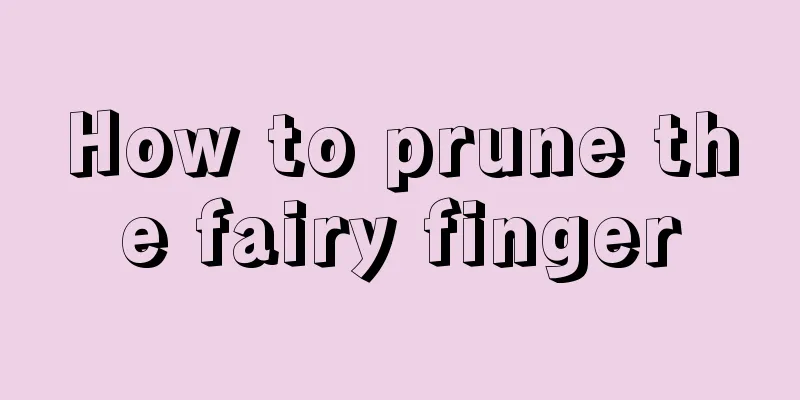How to prune the fairy finger

Pruning before floweringPruning before flowering is to ensure that the flower buds grow on strong nodes. In mid-to-late September, the nodes extending from the current year's single leaf can be pruned, and the deformed, twisted, weak and tender nodes can be removed to promote the differentiation of flower buds at the top of the nodes. Buds begin to appear in early October, and the flower buds are milky white to light red papillary. At this time, the newly grown flat stems should be removed in time to promote the birth of flower buds. After the flower buds are born, they should be thinned out according to the nutritional conditions. Generally, one flower bud is retained on one node. For two or more flower buds that are born successively at the end of the stem, the larger one should be kept and the smaller one should be discarded to concentrate the nutrients and avoid falling buds and flowers. If the plant grows vigorously but has few flower buds, it is not necessary to thin out the buds, but the young and tender stem nodes need to be removed. Pruning after floweringPruning after flowering is to shape the plant and promote branching. There is a dormant period in mid-March, during which pruning and shaping can be carried out in conjunction with repotting and changing the soil. Usually pruning is done in layers, with the bottommost nodes allowed to be slightly longer, followed by the middle ones, and the top ones cut short. Stems that have not been pruned for many years and have single nodes that are too long should be pruned. After pruning, they can grow two or more nodes and the plant will be fuller. For plants with too dense nodes or too vigorous growth, thinning and shaping should be combined with cutting off some large inner branches to allow ventilation and light to pass through. This can reduce the burden on the rootstock, delay plant aging, and reduce flower and bud drop. How to operateWhen cutting off the nodes, you should not cut from the middle of the node, but from the base of the node. At the same time, you need to retain a 1 to 2 mm long stalk to prevent damage to the growing point. The stalk will shrink and fall off soon after being cut, and no pruning marks will be left after the new stem nodes emerge. If you persist in pruning every year, the nodes will be distributed in a fan shape, and the plant will become fuller and fuller. |
>>: How to propagate the fairy finger by grafting
Recommend
The Flower Language and Cultural Legends of Winter Jasmine
The Flower Language of Winter Jasmine Forsythia i...
When is the best month to prune bougainvillea? Time and method for pruning potted bougainvillea
Bougainvillea pruning time Bougainvillea needs to...
What to do if the branches of the fortune tree become soft
1. Cut off rotten roots When you find that its br...
A complete guide to the bud and bud dropping of Schlumbergera cactus, so complete and practical
Reason for bud drop 1: Christmas cactus just boug...
How to grow orchids
1. Breeding environment 1. Light: Orchids do not ...
These 8 kinds of flowers can survive even at a high temperature of 40℃ when thrown into the soil. They can be called a magic tool for protecting flowers!
What are the functions of basin grass? What is po...
Cultivation methods and precautions of golden fruit (milk eggplant)
How to cultivate golden fruit soil Golden fruit l...
How to prune dwarf apple trees? Pruning techniques and precautions
When to prune dwarf apple trees Dwarf apple trees...
How to grow cloud bamboo
1. Maintenance conditions 1. Flower soil: It is v...
Several green plants with drug-absorbing effects
Osmanthus fragrans Osmanthus is a traditional fam...
I have 3 pots of flowers at home. Not only are they beautiful and easy to grow, they can also bring good luck!
Huahua grows three kinds of flowers at home: hone...
How to grow iceberry succulent
1. Breeding environment 1. Soil: To grow iceberry...
What to do if the fortune tree is frozen
1. Increase the temperature Wilting and yellowing...
Jacaranda growth environment conditions and characteristics
Jacaranda growth environment conditions and requi...
Common varieties of lemons
Eureka Also known as Youlike and Youlijia, this v...









